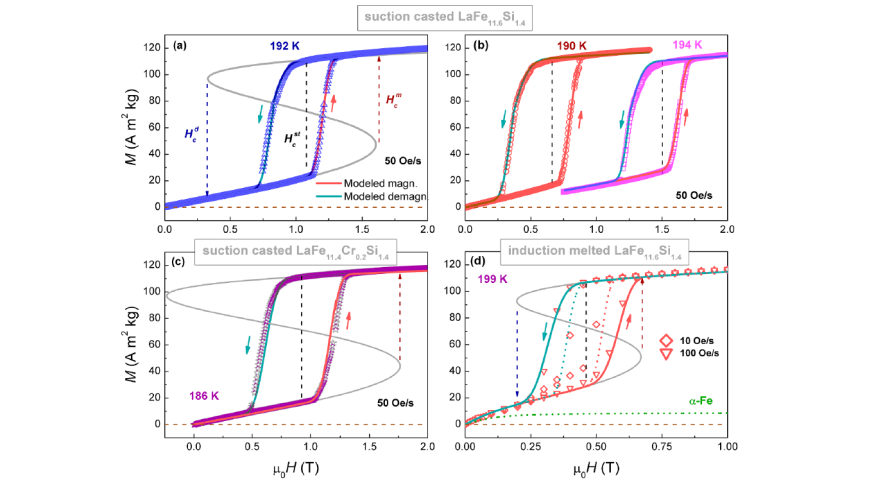Combined kinetic and Bean–Rodbell approach for describing fieldinduced transitions in LaFe11.6Si1.4 alloys
2021/02/16

L. M. Moreno-Ramírez, J. S. Blázquez, I. A. Radulov, K. P. Skokov, O. Gutfleisch, V. Franco, A. Conde
Journal of Physics D: Applied Physics 54, 135003, (2021).
We propose a combination of the Kolmogorov–Johnson–Mehl–Avrami nucleation and growth theory and the Bean–Rodbell model to describe the field-induced transition in LaFe11.6Si1.4 alloys. The approach is applied to a set of bulk samples undergoing first-order transitions produced by different routes and including doping effects. The kinetic analysis of both magnetization and demagnetization processes reveals a nucleation and three-dimensional interface-controlled growth for these alloys. Introducing the kinetic process between the metastable and stable solutions of the Bean–Rodbell model, the field dependence of the magnetization/demagnetization processes, including magnetic hysteresis for different magnetic field sweeping rates, is better reproduced than with the pure model.
DOI: 10.1088/1361-6463/abd583



